Art
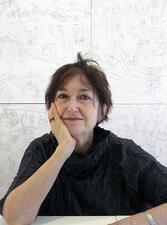
Joyce Kozloff
Joyce Kozloff is an internationally recognized painter, public muralist, and feminist whose long-term passions have been history, culture, and the decorative and popular arts. One of the founders of the pattern and decoration movement, Kozloff is dedicated to creating her own work and giving the folk art of women of color a voice. Kozloff is known as one of America’s more original and engaging artists.
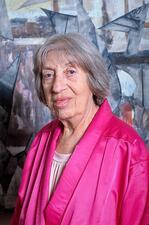
Lee Krasner
The child of Russian-Jewish immigrants, Lee Krasner was a staunch supporter of the integrity of modern art and one of the only painters in New York to work in abstract style before World War II. Despite putting her career on hold for years to aid her famous husband, Jackson Pollack, Lee Krasner achieved recognition in her own right as a gifted abstract painter.
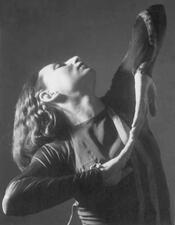
Gertrud Kraus
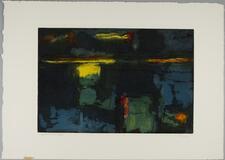
Doris Barsky Kreindler
Vigorous, rapid, and exciting use of the palette knife is not usually associated with women painters in any era, but Doris Barsky Kreindler’s abstract expressionist works in the 1950s, 1960s, and early 1970s, inspired by Hans Hofmann, were exceptional
Ilona Kronstein
Ilona (Ili) Kronstein was an artist and graphic designer. In the 1930s she focused on her artistic training, working first as a graphic artist, before working in her own studio. Her work, which was not exhibited in her lifetime, was rediscovered in the late 1990s and exhibited in Vienna at The Jewish Museum.

Barbara Kruger
Barbara Kruger creates conceptual art that pushes audiences to question assumptions about gender, violence, patriotism, and their relationship to the media. Kruger has exhibited in galleries and museums in the United States and Europe. Perhaps more significantly, she has brought her art to such urban public spaces as bus stops, subway stations, and billboards.
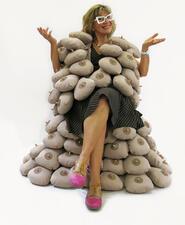
Mirta Kupferminc
Mirta Kupferminc (b.1955) is an internationally recognized contemporary Argentine Jewish artist. For the past four decades, she has explored memory, culture, history, and language, in a variety of art media.
Ewa Kuryluk
Ewa Kuryluk is an author, writer, essayist, artist, and art historian. Born in Poland, she did not know for a long time that her mother was a Jew and a member of the underground whose survival had been facilitated by her future husband. Kurlyuk has published in the field of art history, produced art held by museums around the world, and written poetry and novels.

Phyllis Lambert
Phyllis Lambert is a Canadian architect and philanthropist. After receiving her M.S. in architecture in 1963, she established herself as a leader in urban conservation and public architecture. She has received many awards and honors, including the Gold Medal from the Royal Architecture Institute of Canada in 1991—Canada’s most prestigious architectural award.
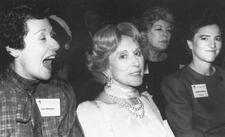
Estée Lauder
Estée Lauder became a household name for beauty thanks to the luxurious makeup, lotions, and perfumes she created. An astute businesswoman, she made a fortune manufacturing, marketing, and distributing cosmetics around the world and was regularly honored for her business achievements.
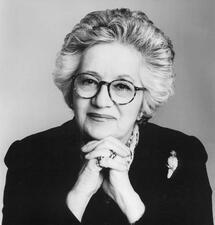
Judith Leiber
Judith Leiber carved a unique place for herself in the world of fashion as the designer of some of the most inventive and sought-after handbags in the world. After fleeing the Nazi occupation of Hungary, Leiber worked for various handbag manufacturers in America before starting her own company in 1963.
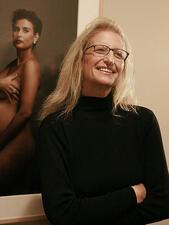
Annie Leibovitz
For decades, Annie Leibovitz and her camera have exposed to the public eye subtleties of character that lay beneath the celebrity personae of rock stars, politicians, actors, and literary figures. As chief photographer for Rolling Stone magazine, she fueled the American fascination with rock ’n’ roll dissidents in the 1970s; in the 1980s and 1990s, she captured the essence of the day’s great cultural icons with her work for Vanity Fair.
Paola Levi-Montalcini
Paola Levi-Montalcini was an influential twentieth-century Italian painter who aimed for a synthetical expressiveness and played a key role in the development of the Movimento Arte Concreta in the 1950s. She debuted as a painter in 1931 at the first Quadriennal of National Art of Rome and continued to exhibit throughout Italy. The Rome Institute of Enciclopedia Italiana devoted an important retrospective exhibition to Levi-Montalcini after her death.
Florence Nightingale Levy
Florence Nightingale Levy’s most significant achievement was the founding of the American Art Annual in 1898. A comprehensive directory of the American art world, the Annual catalogued schools, associations, exhibitions, and artists nationwide. Levy went on to perform invaluable editing, organizing, and educational roles in the American art world for the next fifty years.
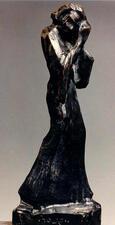
Batia Lichansky
Batia Lichansky, Israel’s first woman sculptor, famously expressed the pioneer Zionist spirit during the formative years of the State of Israel through her portrait sculptures, reliefs, and memorials sculpted in stone, wood, and bronze. After studying across Europe, Lichansky became a prominent Israeli artist and won the Tel Aviv-Jaffa Dizengoff Prize twice, in 1944 and 1957.
Charlotte Lipsky
Charlotte Schacht Lipsky found an unusual balance between activism and pragmatism: on one hand, a follower of the revolutionary Emma Goldman, on the other, the owner of a successful interior decorating business. In her later years, she was involved in Hadassah and the Women’s American ORT, an organization that taught trade skills to Jews around the world.
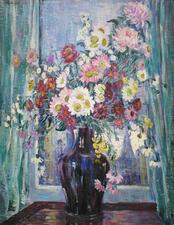
Dorothea Litzinger
Dorothea Litzinger was a talented painter, known for her paintings of flowers and landscapes. Although she died at the young age of 35, she was actively involved in her local community and a successful artist, who had many gallery exhibitions.
Madame d'Ora
Madame d’Ora’s vibrant portraits of twentieth-century artists and intellectuals remain important testaments to European cultural life at the turn of the century and beyond. D’Ora was the first woman accepted by the Association of Austrian photographers, and one of the first photographers to focus on modern dance and fashion. She paved the way for many Jewish female photographers to find success.
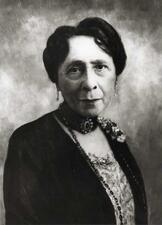
Mary Ann Cohen Magnin
Until her death, Mary Ann Cohen Magnin took an active interest in the department store she founded, I. Magnin and Company, an exclusive chain that specialized in women’s clothing. Energetic, stubborn, and with an outstanding intuition for business, Magnin rose to stunning success at the turn of the twentieth century.
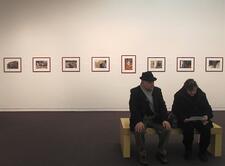
Vivian Maier
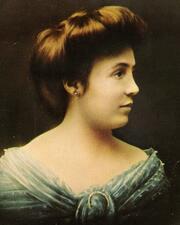
Lane Bryant Malsin

Nicolette Mason
Etta Wedell Mastbaum
Etta Wedell Mastbaum was the scion of a prominent nineteenth- and twentieth-century Philadelphia family. A philanthropist, department store executive, art collector, and director of a national chain of motion picture theaters, Mastbaum donated a collection of Rodin sculptures and ephemera to the city of Philadelphia.
Ellen Lehman Mccluskey
Ellen Lehman McCluskey, a firm believer that quality design is a result of close communication between architect and interior designer, built her own design firm into a business with national, international, and professional respect.



